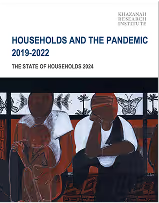
Changing the strategy from stimulus to protection
We need a second-round economic package to cushion the impact of Coronavirus Disease 2019 (Covid-19), with a slight change of strategy from 'stimulating' the economy to 'protecting' productive potential as both the health and economic crises worsen.The first-round economic stimulus was announced as a RM20b package: RM3.5b from Federal Government expenditure, RM3.5b from Bank Negara Malaysia (BNM) and RM13b from the additional disposable income due to the reduction of the Employee Provident Fund (EPF) minimum employee contribution rate. The number of Covid-19 patients then was 24, now we have 1,306, and growing. There were no deaths then, but at the time of writing, we have 10. We were not even aware of social distancing at that time, now we have a movement control order in place.
This means that some of the measures announced in the first-round economic stimulus e.g. promoting domestic tourism would not make sense now. As pointed out by a few prominent economists¹, it also wouldn't make sense to stimulate aggregate demand when we have social distancing to prevent the escalation of a pandemic. Coupled with supply-side shocks i.e. disruptions in global supply chains and workers not going to work, stimulating aggregate demand could only drive inflation, create panic buying and threaten public health². Therefore, the short-term strategy should shift away from stimulating economic activities to protecting businesses and households, so that they have sufficient resources to ride out the shocks of the next few months and can restart production as soon as the crisis is over.
In addition, with more people being put out of jobs, plus some employees opting to continue with the original 11% EPF contribution rate, the RM13b additional disposable income derived from the reduction in the contribution rate would likely be overestimated. The Federal Government would need to pick up the slack by increasing the original RM3.5b quite significantly and potentially reallocating some resources towards this new strategy of protection, while BNM should continue to ensure that there is sufficient liquidity in the financial system so that banks can continue extending payment moratoriums to affected businesses and households.
Enhancing employment retention
One of the central tenets of this protection strategy is a massive employment-retention programme as a response to the economic shocks of Covid-19. This is to ensure households have enough resources to ride out the pandemic in the next few months as firms take cost-cutting measures. The government has introduced one version of the employment retention strategy called the Employment Retention Program (ERP). The ERP is a RM600 pay-out to employees who are forced to take unpaid leave. The program is an extension of the Employment Insurance Scheme (EIS), which is strictly meant for employees who are retrenched, and not for workers suffering from other forms of labour reduction measures. Hence, it is a good initiative given the likelihood that firms would adopt other forms of labour reduction measures in mitigating Covid-19 shocks, and the right way to think about the issue. However, the ERP remains sorely inadequate for a few reasons. First, the ERP focuses on forced unpaid leave, but there are other forms of labour reduction measures that will be undertaken by firms e.g. reduction in wages or hours that would not amount to retrenchment or unpaid leave. Programme design should consider wage reduction as a potential preference by firms, especially in the context of strong employer-employee relationships in smaller firm settings, which has the added edge of incentivising joint-responsibility between government and businesses in supporting employees.
Second, the ERP doesn't include the bulk of self-employed and non-standard workers who have not contributed to the EIS. However, with the extension from just the passenger transportation sector to 19 other sectors of self-employed workers being made compulsory to register with SOCSO's Self-Employment Social Security Scheme, there is now a way of tracking and channelling cash aid to this group.
Third, the pay-out rate of RM600 is below the minimum wage and constitutes about 26% of the average wage³. As replacement income, this amount may not be sufficient to help affected employees, especially low-waged employees burdened with financial commitments and debt obligations.
The two immediate things that the government can do are: first, extend the ERP coverage to employees affected by wage reduction as well as self-employed workers, similar to how it has extended benefits to employees on unpaid leave, and second, use the minimum wage of RM1,200 as the benchmark in calculating the pay-out amounts. In order to broaden coverage and increase pay-out, this requires fresh injections from the Federal Government into the EIS. The allocation set aside under the first-round stimulus to help employees on unpaid leave is RM120m. At minimum, this amount needs to be tripled in the short-term and further scaled up in the medium-to-long term.
Enhancing employment retention is crucial to ensure that households do not suffer irreversible livelihood losses due to short-term shocks and help them bounce back faster to productive life when the crisis is over.
Finding fiscal space
However, finding fiscal space to support a scaled up version of employment retention could be a challenge. In fact, besides incentivising employment retention, we also need a fresh round of injections from Federal Government expenditure to address a broad range of issues: support frontline workers, expand social assistance and safeguard health. However, our fiscal space is currently limited by a budget balance rule-or a golden rule, which Malaysia adopts as a fiscal prudence measure. In short, the government can only borrow for development or capital spending and our current fiscal balance cannot be in the negative. Unfortunately, our current fiscal balance is low and a significant increase in our budget would see us breaking the fiscal rule. And we cannot do this without removing legal constructs that are put in place to safeguard this rule.
What are our options? One, we can increase revenue. But this is not realistic in the short-term. The drastic drop in crude oil prices has slashed revenue (every USD10 drop in oil price is a reduction of RM3b in revenue⁵) and the decrease in economic activities would further reduce tax collections. Two, we can design the economic package to tilt more towards development or capital spending. But this means that things like subsidies and social assistance, which would reach firms and households faster, cannot be increased substantively. Again, in the short term, this is not a preferred option to address more immediate shocks. Third, we can reallocate resources from the existing budget. With a total budget of RM297b for the year 2020 and given that we are only in the first quarter of the year, this means that we have room to move resources from the non-essentials to the essentials. Specifically, there is an argument made about defunding uncritical ministries⁶. In the short term, there are merits to this idea of reallocating resources and it is our most pragmatic solution for now. However, we need to convene parliament urgently to approve any reallocation. We also need to convene parliament if we want to consider relaxing the fiscal rule to prepare for the medium term in case the situation worsens. But our current political imbroglio might be inhibiting this. The triple whammy of Covid-19, oil price crash and our political impasse are challenging our quest to find fiscal space. At this critical juncture, we have to muster enough trust and non-partisanship to overcome this impasse.






%20(1).avif)







_1.avif)
